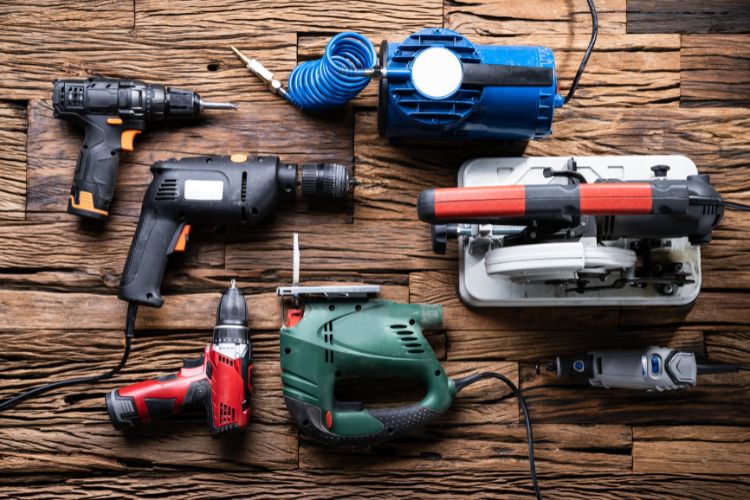Every jobsite has them, every tool crib, every DIY (do-it-yourself) garage has them. Power tools are the basic tools in the 21st century. Whether electric, battery, pneumatic or hybrid, power tools are the worker’s friend.
How valuable are they? FMI (Future Market Insights) puts the number for the global power tools market size at $33.36 Billion in 2021 with sales of cordless power tools driving growth by 5.1% CAGR between 2021 and 2031. According to the FMI study, the power tools market had registered growth of just 3.7% between 2016 and 2020.
Power tools applications in construction include cutting, grinding, sanding, drilling, shaping, polishing, and many more. The usual tools include electric screwdrivers, hammer drills, circular and saber saws, etc. Cordless power tools are more in demand and will continue to grow in the forecasting period, so all power tool manufacturers are investing a significant amount in R&D for them. In turn, this is driving the advancement in battery technologies: Lithium batteries give longer operational life, advancing the cordless power tools market.
Professionals around the world are seeking out solutions to make their jobs easier and ultimately save time and resources. While their evolving needs led to advancements in cordless technologies including motors, electronics, and batteries, the demand for productivity solutions has been encouraging innovations in the power tools market.
For example, there is an increasing focus on going green. Market players looking to carve a niche amid rising competition have been consciously introducing eco-friendly alternatives to popular technologies. An increasing number of power tools manufacturers are therefore ruling out fossil fuel models to offer more energy-saving power solutions.
With the world struggling with massive storms, chaotic heat waves, and wildfires, the need to move away from pollutants is more than ever before. Catering to changing consumer preferences, Santa Monica, Calif.-based start-up Graze Mowing has announced a next-generation autonomous robot for lawn mowing at a commercial scale. While the company hopes to use solar power in the future, currently it has been working with swappable batteries that promise to save significantly on the cost incurred on fuel and electricity.
A newer realm is being witnessed in charging technology for high-end electronic devices. Companies such as Bosch and Milwaukee have innovated on novel battery platforms that have solutions for myriad problems faced by end users in terms of charging and durability. Inductive charging, based on wireless transmission of alternating magnetic fields is a new technology that is currently only being offered by Bosch. Through inductive charging the battery can stay in the tool whilst being charged thus obviating the need to remove batteries. This has proved to be a boon for front line industrial workers who are working on tight schedules and time constraints.
Drilling tools are highly sought-after power tools due to their increasing application across diverse industries, including construction. The drilling tools segment is expected to account for above 17% of the market by the end of 2031 and is expected to remain dominant through the forecast period.
Accounting for nearly 30% of the overall share through the forecast period, construction applications account for the bulk of demand for power tools. Growth in the segment is primarily due to the rapid development of the construction industry along with the bulk deployment of power tools in construction projects. Increasing construction spending in countries such as the U.S., the U.K., and China will continue aiding the expansion of the market.
One of the key factors supporting expansion in the U.S. is the substantial growth in commercial and residential construction. The U.S. Census Bureau reported construction spending by the country stood at $1,459.4 billion in November 2020, during the COVID pandemic, with both private and public spending on construction activities surging since then.
Want to tweet about this article? Use hashtags #construction #sustainability #infrastructure #futureofwork


